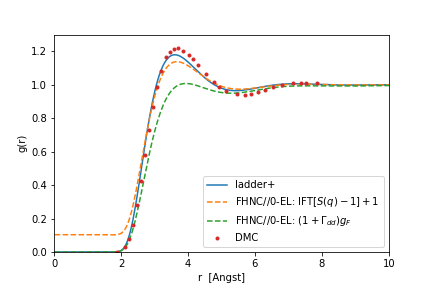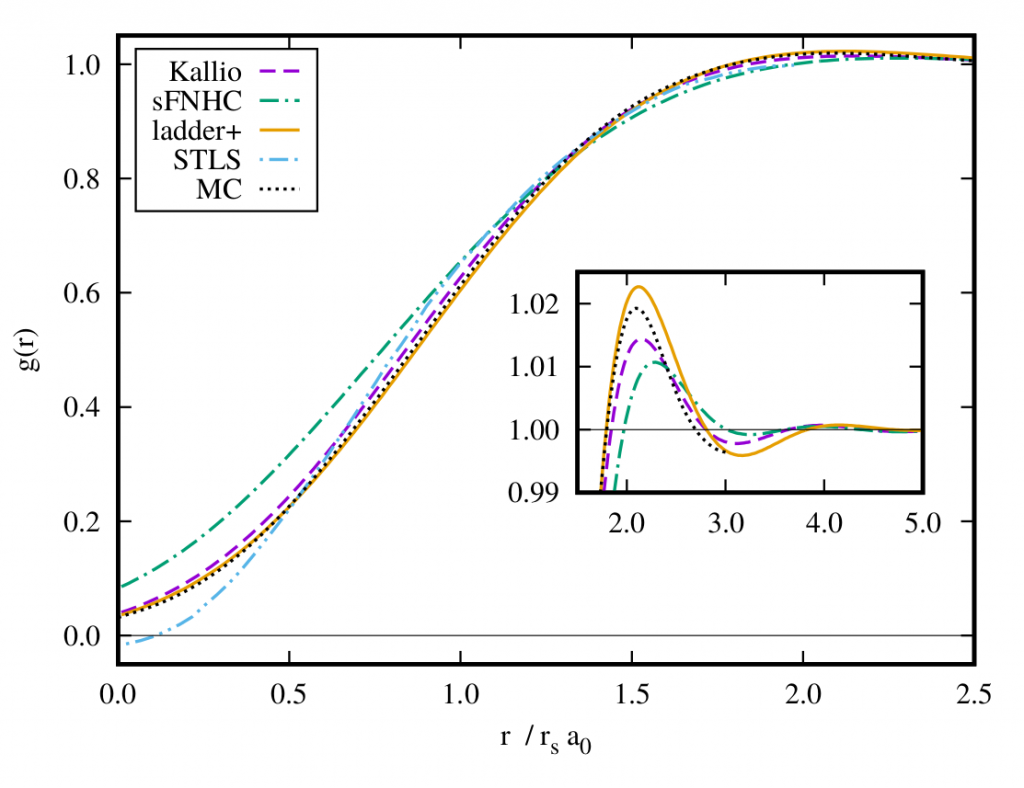I often have to do unit conversions, to compare to other work or to experiments. When doing this, I always have the feeling it takes more time than it should, because I have done these conversions already several times and they are simple. To make this process faster and easier for the users of the FHNC-app and for me, I state the conventions here.
Lets start with a simple example, the distance \(r\). This symbol represents a physical quantity, i.e. a number which multiplies a unit. Solving a physical problem on a computer we only use numbers, the information about the units has to be kept somewhere else. To make manipulations more transparent I split physical quantities: \(r=\tilde{r}r_s a_B\), where \(\tilde{r}\) is the variable implemented in the computer program and \(r_s a_B\) is the unit, the “typical” distance between two particles. The Hamiltonian of the HEG is then given by
$$H = \left(\frac{\partial^2}{r_s^2 \partial \tilde{\bf{r}}^2} + \frac{2}{r_s }\sum_{i<j}\frac{1}{|\tilde{\bf{r}}_i-\tilde{\bf{r}}_j|}\right)Ry$$
where Ry is the Rydberg energy. For other types of interaction the same units are used, although this is a bit unconventional. Often used units are then the Fermi energy and momentum, \(E_F\) and \(k_F\) respectively. The conversion is done with the dimensionless factor \(\alpha_d\), where \(d\) stands for the dimension. For 3D systems we have \(\alpha_3=\left( \frac{4}{9\pi} \right)^{\frac{1}{3}}\). With this we obtain
$$E_F=\frac{1}{\alpha_d^2 r_s^2}Ry \quad \text{and }\quad k_F= \frac{1}{\alpha_d r_s a_B} $$
Having a different mass of the particles \(m^*\), compared to the electron mass \(m\) is also covered, simply replace the units by starred ones:
$$ Ry^*= \frac{m^*}{m}Ry \quad \text{and }\quad a^*_B= \frac{m}{m^*}a_B$$
In dealing with this units stuff the book of Giuliani and Vignale: “Quantum theory of the electron liquid” is always a helpful resource.


